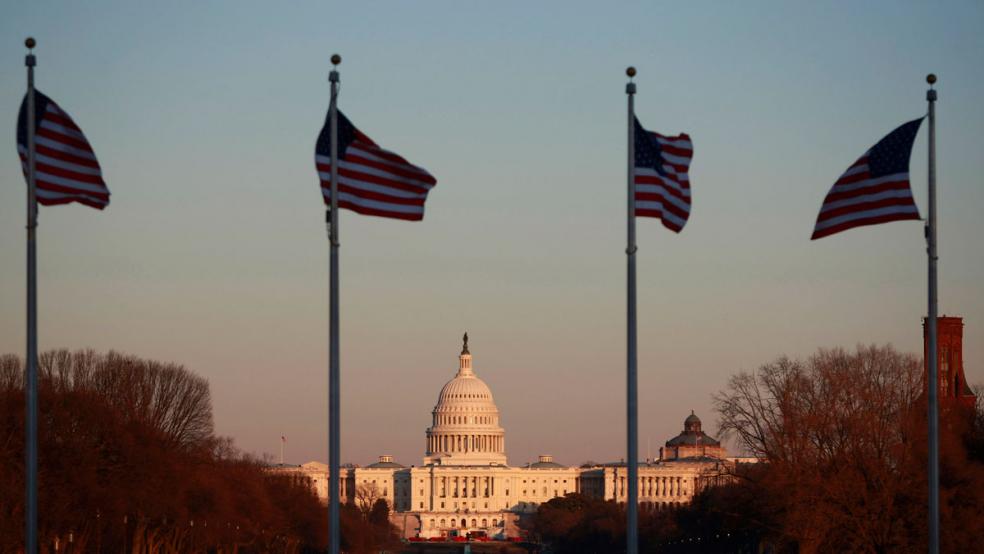Congressional leaders and the Trump administration agreed early Wednesday morning to a massive $2 trillion aid package designed to support individuals and businesses struggling amid the coronavirus epidemic.
The Senate is expected to vote on the legislation later Wednesday, sending it to the House, which could vote as early as Thursday, assuming no complications arise.
This is huge: The emergency relief package is unprecedented in its size and scope, equivalent to about 10% of annual U.S. economic output. It’s more than twice the size of the stimulus Congress passed as the economy swooned in 2009, and would provide hundreds of billions of dollars more than the discretionary budget set by Congress for this year. “This is a wartime level of investment into our nation,” Republican Senate Majority Leader Mitch McConnell said in announcing the deal.
For context: Prior to the coronavirus relief spending, the federal government was projected to spend $4.7 trillion this year in total — some $2.9 trillion in mandatory spending on health care, Social Security and other parts of the social safety net and $1.4 trillion in discretionary spending (determined annually by Congress) for defense, transportation, education and other programs.
But more will be needed: As large as the package is, lawmakers and analysts note that it is aimed more at limiting the near-term economic hit from the virus, keeping families and businesses afloat, rather than providing stimulus to the economy. “If the outbreak and the disruptions continue through summer, lawmakers will need to spend even more,” Jim Tankersley writes at The New York Times. John Lettieri, the head of the Economic Innovation Group think tank in Washington, told Tankersley that the lending capacity needed to prevent small business closures and layoffs could wind up four or five times larger than what is being provided now.
House leaders have reportedly told their members to expect at least two more coronavirus stimulus measures in the months ahead.
Not everyone is pleased with the current deal: New York Gov. Andrew Cuomo, who has taken a leading role in responding to the crisis, said the package was “terrible” for his state. Cuomo called the bill’s $3.8 billion in aid for New York state and $1.3 billion for New York City, currently the epicenter of the pandemic in the U.S., a “drop in the bucket.” He added that lost tax revenue will cost his state as much as $15 billion.
House Speaker Nancy Pelosi said Wednesday her caucus would review the bill, and The Hill reports that there could be support for amending the package in light of Cuomo’s criticisms. A separate House version of the aid package gave New York $17 billion, compared to a total of $3.5 billion for the state in the Senate package.
Some Republicans also expressed reservations. Sens. Ben Sasse, Tim Scott and Lindsey Graham charged that the bill as written could mean that some unemployed workers would earn more on unemployment than they would working. “Unless this bill is fixed, there is a strong incentive for employees to be laid off instead of going to work. ... We must sadly oppose the fast-tracking of this bill until this text is addressed, or the Department of Labor issues regulatory guidance that no American would earn more by not working than by working," the trio said in a statement.
Other senators have pushed back, though, and Bernie Sanders warned that unless the Republicans drop their objections he is prepared to put a hold on the legislation until stronger conditions are imposed on the $500 billion in aid for corporations.
What’s in the bill:
- Direct payments for individuals of $1,200 for each adult and $500 for each child in households earning up to $75,000 a year, or $150,000 for married couples. The payments taper off at higher incomes and are eliminated above $99,000, or $198,000 for couples. Senate Minority Leader Chuck Schumer said payments could be issued as soon as April 6 and arrive by April 15, though they’ll take longer for taxpayers who don’t have direct deposit information on file with the IRS.
- Unemployment benefits extended by four months, with state-level payments boosted by as much as $600 a week. Eligibility will be expanded to include freelancers, gig workers and those who have been furloughed.
- Small business assistance worth about $350 billion in the form of loans, available through June 30. A portion of the loans are eligible for forgiveness for firms that keep workers on payroll.
- Corporate bailouts from a $425 billion pool managed by the Federal Reserve, with an additional $75 billion earmarked for specific industries, including airlines and hotels. The bill bans stock buybacks for a year for companies receiving assistance and prohibits businesses owned by President Trump and other lawmakers from benefiting from aid.
- Hospitals and other health care providers are targeted with aid package worth about $100 billion.
- Tax incentives including a two-year suspension of the employer share of payroll taxes.





